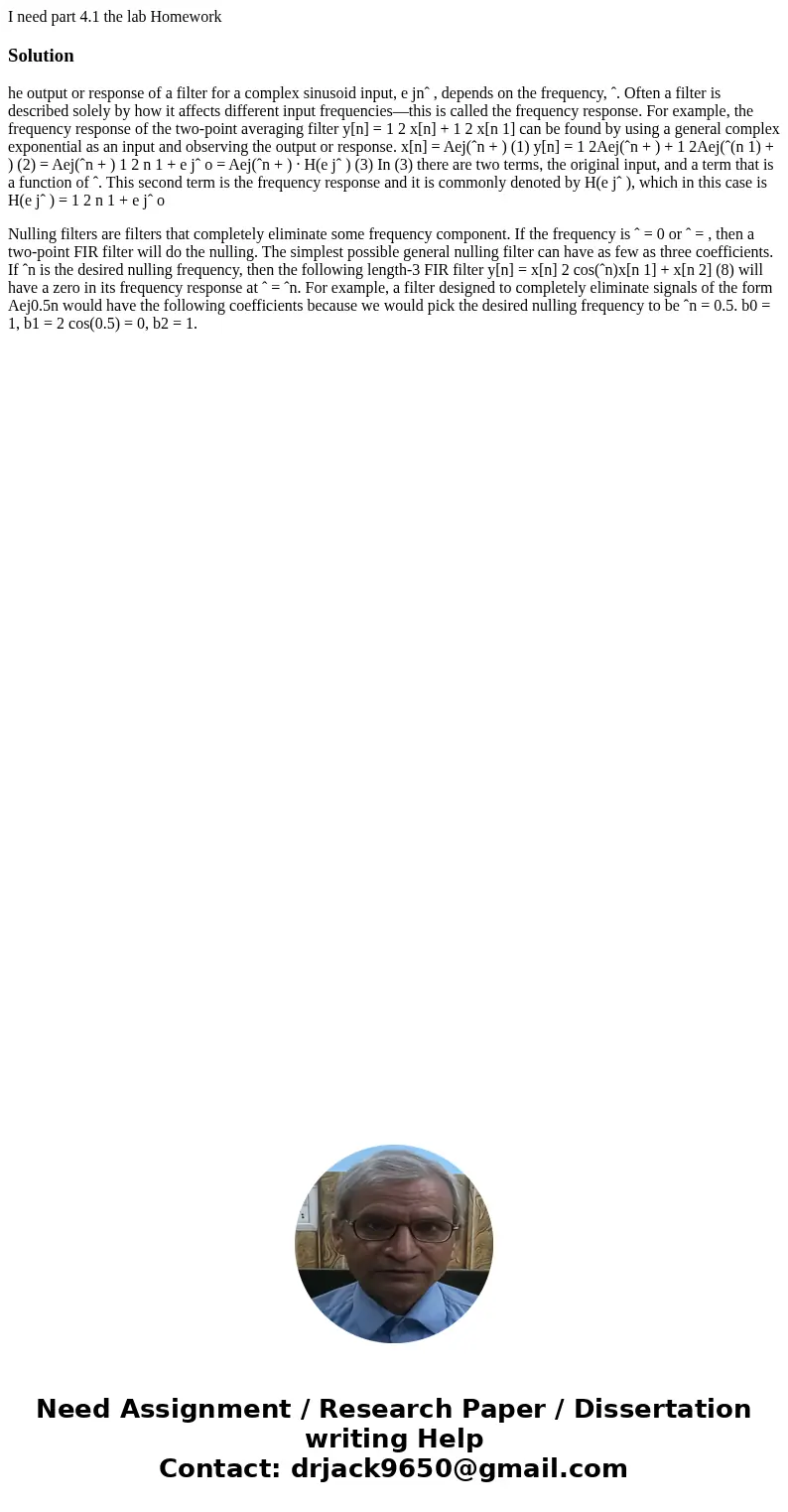I need part 41 the lab HomeworkSolutionhe output or response
I need part 4.1 the lab Homework
Solution
he output or response of a filter for a complex sinusoid input, e jnˆ , depends on the frequency, ˆ. Often a filter is described solely by how it affects different input frequencies—this is called the frequency response. For example, the frequency response of the two-point averaging filter y[n] = 1 2 x[n] + 1 2 x[n 1] can be found by using a general complex exponential as an input and observing the output or response. x[n] = Aej(ˆn + ) (1) y[n] = 1 2Aej(ˆn + ) + 1 2Aej(ˆ(n 1) + ) (2) = Aej(ˆn + ) 1 2 n 1 + e jˆ o = Aej(ˆn + ) · H(e jˆ ) (3) In (3) there are two terms, the original input, and a term that is a function of ˆ. This second term is the frequency response and it is commonly denoted by H(e jˆ ), which in this case is H(e jˆ ) = 1 2 n 1 + e jˆ o
Nulling filters are filters that completely eliminate some frequency component. If the frequency is ˆ = 0 or ˆ = , then a two-point FIR filter will do the nulling. The simplest possible general nulling filter can have as few as three coefficients. If ˆn is the desired nulling frequency, then the following length-3 FIR filter y[n] = x[n] 2 cos(ˆn)x[n 1] + x[n 2] (8) will have a zero in its frequency response at ˆ = ˆn. For example, a filter designed to completely eliminate signals of the form Aej0.5n would have the following coefficients because we would pick the desired nulling frequency to be ˆn = 0.5. b0 = 1, b1 = 2 cos(0.5) = 0, b2 = 1.

 Homework Sourse
Homework Sourse